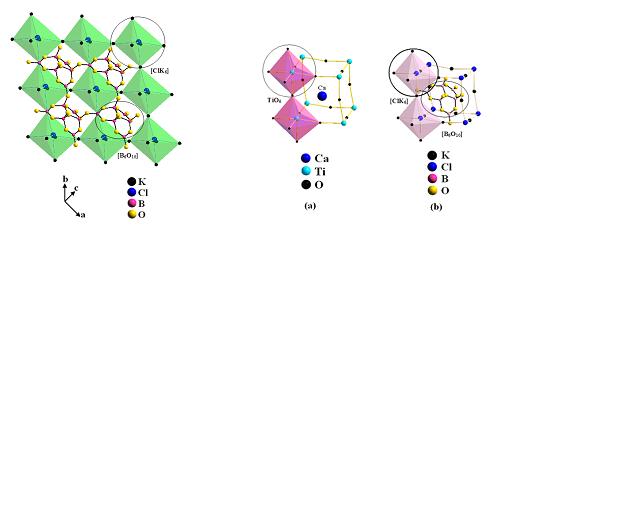The search of new nonlinear optical (NLO) materials with some properties, namely, large NLO coefficient, wide transparency range, good chemical and mechanical stability is a hot topic. A comprehensive analysis of structure-property relationship is vital importance. Therefor, the design and synthesis of NLOmaterials is still one of the most interesting and challenging goals of the chemistry and materials science field.
Prof. Shilie Pan and his Ph.D. students from Xinjiang Technical Institute of Physics & Chemistry, Chinese Academy of Sciences, recently made great progress in the prediction and design of new NLO materials. Introduction of the Cl- anion in the borate systems generates a new phase-matchable perovskite-like phase, K3B6O10Cl, which exhibits alarge second harmonic response about four times that of KH2PO4 (KDP) and is transparent from the deep UV (180 nm) to middle-IR region. K3B6O10Cl crystallizes in the noncentrosymmetric and rhombohedral space groupR3m. The structure consists of the A-site hexaborate [B6O10] groups and the BX3 Cl-centered octahedral [ClK6] groups linked together through vertices to form the perovskite framework represented by ABX3. It has excellent features such as large second harmonic response, good mechanical properties and a short wavelength UV cut off edge, which make it avery attractive candidate for UV NLO crystals in solid-state laser applications. The article“K3B6O10Cl: A New StructureAnalogous to Perovskite with a Large SHG Response and Deep UV Absorption Edge”(J. Am. Chem. Soc. Dol:10.1021/ja111083x)has been published.
The work has been supported by Chinese Academy of Sciences, the National Natural Science Foundation of China.

